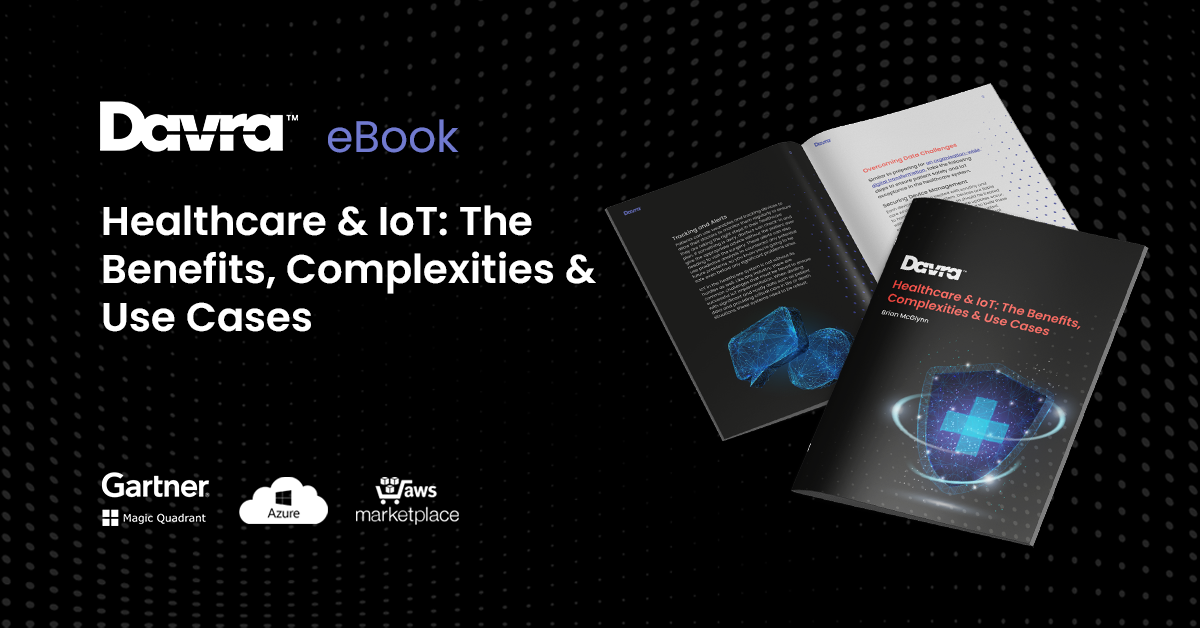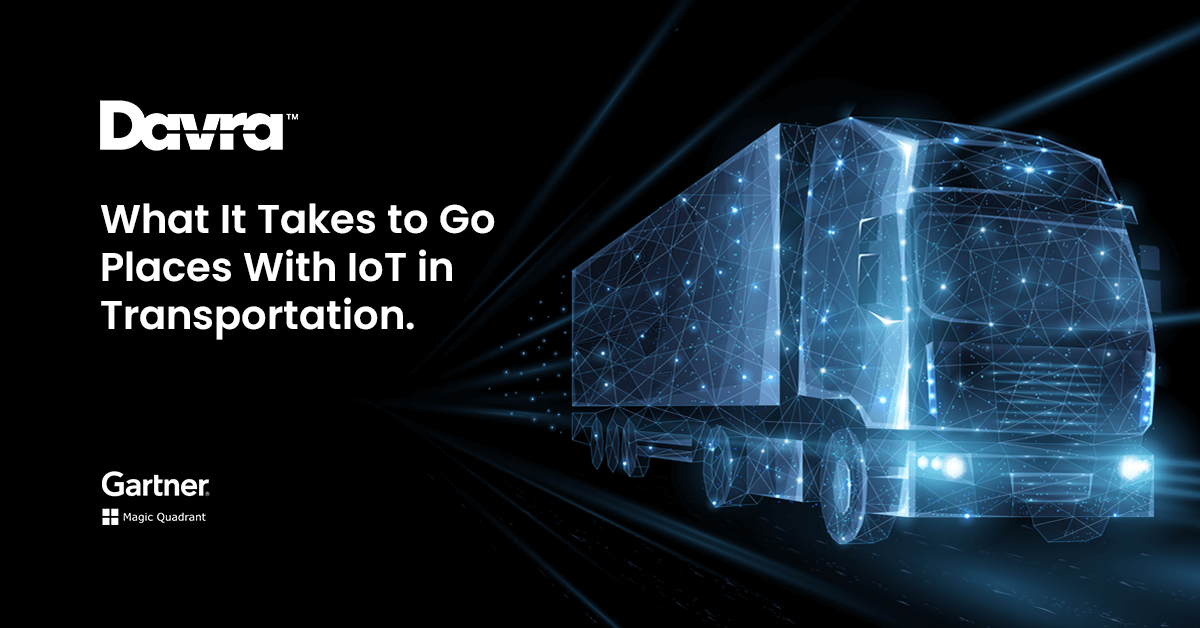IoT in Healthcare Use Cases eBook
Download Your Free IoT in Healthcare Use Cases eBook
Read More


What can you say about the spread of the IoT in Transportation? In short, this industry is pushing the limits that once defined it. Sure, most connected devices might not build new roads on their own or fuel the vehicles that traverse them, but the IoT does something equally advantageous. It improves the way companies, cities and nations maintain and utilize these assets so that the entire planet can benefit.
How can transportation sector organizations that adopt an IoT-centric business model ease common transit woes and deliver superior services? While it certainly helps to chart out a smart business plan, your use of distributed computing and data science could be the compass that enables you to make sense of the map. Here’s how to go from simply watching the scenery whiz by to taking an active role in deciding what shows up outside your window.
Most business technologies benefit from clear guidance and well-thought-out implementation strategies. Before you deploy a new vehicle fleet upgrade, for instance, you’ll probably define an operating mission and identify which kinds of hardware will help you fulfill your objectives with the greatest ease.
In transportation, it’s not always easy — or practical — to map everything out clearly in advance or separate individual aspects of a greater business whole. For instance, the boundaries between marine shipping infrastructures and land-based transit systems aren’t always as clearly defined as the ports that serve as their meeting points. Even within seemingly straightforward sectors, such as trucking and heavy rail, there exists a vast diaspora of management methodologies and business practices that dictate how freely different enterprises can leverage the tools they have at hand.
We’re big fans of enabling those who prefer to do things their way. Still, this tendency to blaze your own path can definitely complicate technology adoption in freight, passenger transit, and other transportation domains. Even more troubling, today’s enterprises are often driven by market factors that bear scant resemblance to ideal business conditions, such as when you’re:
• Trying to accommodate population growth using an outmoded public transit system that was never intended to handle so many riders
• Working to identify failure-prone municipal assets before they succumb to wear and tear with disastrous consequences
• Deploying promising new transit technology that hasn’t yet proven its safety or surmounted regulatory hurdles
• Attempting to secure and justify additional funding from stakeholders that don’t understand the technical nuances that dominate your day-to-day operations
These sorts of challenges are prime candidates for IoT in transportation solutions, but finding answers takes more than just throwing advanced network hardware — or cash — at the problem. Legacy transportation control technologies, variable operating conditions and a host of location-specific nuances make it incredibly difficult to build comprehensive systems from the ground up. Enterprises and municipalities that want to steer clear of the road hazards on their path to a more efficient operation had better be prepared to overhaul their IT strategies.
Most transit industry optimization problems benefit from deep insights, and the doctrine that superior data drives better transit outcomes is by no means contentious. For example, the overwhelming majority of cities demand in-depth testing of autonomous vehicles before letting them travel their streets. Public transportation tracking helps improve service by decreasing wait times at subway platforms and bus terminals to increase ridership. Fleet managers track everything from fuel consumption to regularly planned maintenance calls to get the jump on machinery that will inevitably break down.
Good data has the power to keep companies rolling, sailing and flying more efficiently, and the quality of your information is wholly dependant on how finely tuned your data systems are. Let’s look at a few quick examples that illustrate the benefits:
Shipping companies traditionally face extreme demand around the holiday season. Companies like FedEx and UPS have moved to satisfy their clientele by deploying GPS-enabled IoT applications. While delivery tracking has long been an industry standard, this switch enabled freight enterprises to improve their routing, stay better informed about cargoes en route and avoid traffic in realtime.
Railways changed the world by bringing access to remote locales, but many systems are the embodiment of brainless technology. A distant rail spur can’t tell an engine operator when they’re about to hit a washed-out section of track or fall afoul of a sleeper that’s been rotting for decades. Finland’s VR Group took a new approach. By adding sensors to everything from doors to axles and wheels, the state-owned rail operator was able to not only stay ahead of problems but also analyze their root causes to enhance savings and reliability.
Unique management problems plague trucking companies. More than any other industry, they’re subject to the needs of distributed workforces that aren’t always easy to manage, particularly when routes take drivers far from corporate headquarters.
Our team used Intel’s OBD-II hardware to bring transportation businesses superior insights. By automating vital data-collection tasks, such as tracking driver mileage and behaviors, we devised solutions that helped fleet managers and policy providers make the most of usage-based insurance models. On top of enhancing safety, upholding smart user data ownership standards and easing the claims process, our pay-as-you-drive solutions help operators settle into comfortable, safe working routines.
According to our partner Intel, in 2020, the Internet of Things will include around 26 smart objects for every human on the planet. While only some of these devices will occupy the transit sector, the IoT in transportation is already empowering huge changes.
What are your odds of successfully leveraging linked computing to tie technology, business assets, and people closer together? Technological capability isn’t an issue considering that modern sensors can accomplish everything from remotely monitoring the humidity and temperature inside cargo compartments to tracking individual palettes as they get offloaded and placed on specific vehicles. The ecosystem you build your IoT applications on top of is the only limiting factor.
Transit moves fast, so your deployment practices can’t afford to lag behind. With Davra, you can get a full-fledged IoT implementation in motion in just a few weeks, and you never have to reinvent the wheel when you ought to be using it to go places. Want to learn more? Find out where the transportation industry is headed — and how to keep your organization at the vanguard — by trying a demo.
Brian McGlynn, Davra, COO
Download Your Free IoT in Healthcare Use Cases eBook

Davra IoT is the only Industrial IoT Platform Available on AWS Marketplace
Read MoreThe Collaboration of Humans & Robots Has Created The Cobot
Read More